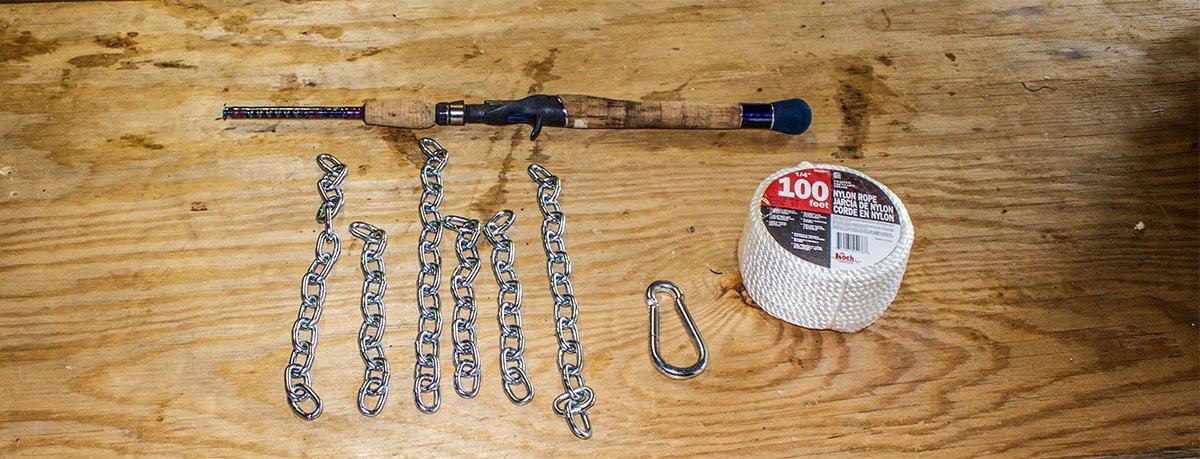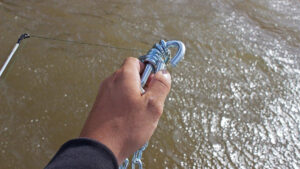Bass fishing with umbrella rigs is incredibly effective, especially in cold water. Unfortunately, bass aren’t the only things umbrella rigs catch. Trees, brush piles and rocks are all fair game for the 3 to 5 hooks dangling off of your multi-wire rig.
Not only does re-rigging waste precious fishing time, but the darn things are also expensive. Break off a single Alabama rig and you may very well be out $40 or more on one cast.
A few years ago a fishing buddy of mine, Cody Sullivan, showed me how to make an inexpensive homemade retriever. It has saved me hundreds of dollars over the years.
How to build it
To build an umbrella rig retriever, you’ll need some variation of the four items below. It’ll cost you approximately $25 to purchase the necessary components, but it will be money well spent in the long run.
Nylon rope: Depending upon the depth you’re fishing, 50 to 100 feet of 1/4-inch nylon rope should be plenty for the job. The rope can be any material; nylon just seems to hold up better.
1/2-inch carabiner: Any size will work as long as your lengths of chain fit inside the clip. This particular size seems to work especially well for me.
Chain: Go to your local hardware store and ask for six lengths of lightwire chain. They’ll charge you by the foot, but I generally get three lengths cut to 12 inches and three lengths cut to 8 inches to ensure the chains hit different parts of the rig.
Scrap wood: This component is your anchor. You can wrap the rope around it to better organize the retriever. I used an broken fishing rod handle here, but you can use almost anything. From pieces of two-by-fours to a dowel rod—all are fair game.
Tie one end of your nylon rope to the scrap wood and the opposite end to the tip of the carabiner. Thread the six lengths of chain onto the carabiner and you’re done. Your retriever is ready to hit the water.
How it works
There is nothing fancy about it whatsoever. In fact, it’s similar to a conventional lure retriever.
Step 1: Once your umbrella rig is snagged, you’ll want to keep your fishing line tight and clip the carabiner to your fishing line. The next steps are easier with a fishing partner—one to hold the fishing rod and another to lower the retriever—but it can be done alone.
Step 2: Hold your rod in one hand to ensure your line stays tight directly to your umbrella rig. With your free hand, slowly lower the chain retriever down to the bait.
Step 3: When you feel your retriever stop lowering, you know you’ve found your lure. Simply jig the chain retriever up and down until you feel it become tangled with the umbrella rig. The chains on your carabiner will find a hook or wrap around the wire arms of your rig. This is exactly what you want.
Step 4: Pull hard on the rope to your retriever. Nine times out of ten, the lure will pull free from the snag.
You’ll likely have straightened out one of your hooks or bent an arm on your rig, so be sure to give the lure a little TLC before your next cast. I recommend using lightwire hooks when fishing with an Alabama rig and using a retriever. It’s better to straighten or break a single hook than to lose the entire $40 rig.
This handy retriever will help you save lures, time and money.













